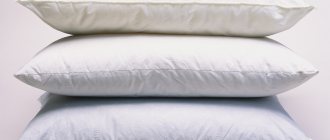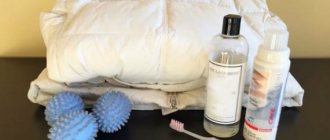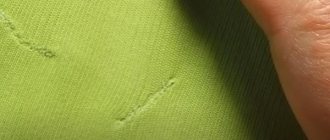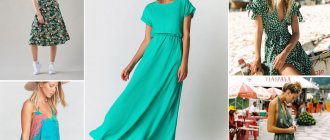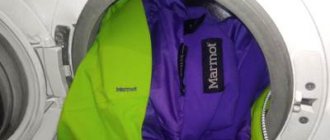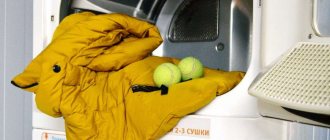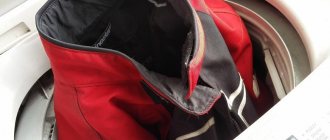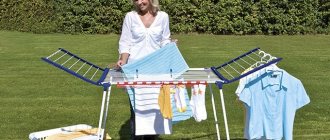What are they and how do they differ from previous analogues and natural fluff?
Time flows relentlessly and inexorably, days, weeks, months, seasons change.
A beautiful winter is creeping up. Living in such harsh weather conditions as in Siberia obliges us to have certain skills in choosing ways to protect ourselves from the cold. One of the most popular types of outerwear, combining such important qualities as: practicality, comfort, warmth, lightness and affordable price, are down jackets. The name, in this case, speaks for itself. To protect the body from exposure to low temperatures, previously only natural down was used as a heat-insulating filler. But in the modern world there are also many other materials that are created using innovative, progressive technologies.
So let's look at what types of fillings for down jackets exist now and compare the characteristics so that you can be prepared when choosing such an important wardrobe item.
What types of fillers are there? How are they fundamentally different?
Types are divided into 2 groups: natural and artificial. Each has its own pros and cons.
The first group consists of natural fluff. It is a popular filler, where swan or goose down, as well as duck or eider down, are used as insulation.
The benefits of down are as follows:
- high heat saving ability
- softness
- ease
The disadvantages of natural down are:
- fragility
- special storage and cleaning conditions
- loss of shape
- possibility of allergic reactions
- high price
Natural down
Among artificial fillers, Thinsulate, which has caused a stir in the textile industry, stands out. From the name (thin-thin, insulation-thermal insulation, English) we get thin thermal insulation. Interestingly, this technology was first introduced in 1978 by the American, as part of the NASA program, as a material for astronaut suits. Consists of microfibers that are 50 times thinner than a human hair. Refers to materials with a high heat retention rate. At a certain density it can protect against temperatures down to -60°C, and is used to create high-quality mountaineering equipment. But let’s look further at the advantages related to outerwear itself.
Advantages of Thinsulate:
- unique thermoregulatory properties
- the lightest of all artificial fillers
- almost 2 times warmer than down
- hypoallergenic
- durable
- does not lose shape
- ecologically pure
- indispensable in regions with high humidity
- perfect for children's clothing
Disadvantage of Thinsulate:
- slightly higher price compared to other non-natural fillers.
Filler Thinsulate
Fillers with a high degree of thermal insulation also include BioPooh Sustans, a patented biopolymer, a revolutionary technology from DuPont-Sorona (USA-Japan). The first high-tech material, partly composed of regularly renewable plant components. The process of creating this fiber is biologically friendly. In this regard, DuPont was awarded the Presidential Award in America for their contribution to the creation of environmentally friendly production.
The advantages of BioPooh are:
- ease
- softness
- elasticity and resilience
- innovative thermal insulation properties
- super strength
- looks beautiful, elegant and not too bulky
- Great for children's down jackets and overalls
- can be washed at home
- environmentally friendly material
Disadvantage of BioFuzz:
- in terms of thermal insulation properties it is close to natural down, that is, inferior to Thinsulate
BioFuzz SUSTANS
There are also many artificial fillers for down jackets that are already outdated and no longer relevant, such as padding polyester, padding polyester, holofiber (fiberskin, fibertek, polyfiber) consisting of different shapes of polyester fibers. To provide thermal insulation comparable to bio-down and Thinsulate, they are required in larger volumes, so they make the product much heavier.
In general, now, having come to an outerwear store for such an irreplaceable item as a down jacket, we can already navigate what the different fillers are and make the right choice. Some are attracted by naturalness, others by a high degree of thermal insulation, and for others, price and practicality are more important. Winter is ahead, it’s worth meeting it prepared, and using the latest advances in science to warm yourself and enjoy this magical time of year in peace.
Once upon a time, a popular artificial filler for clothing was padding polyester - a lightweight, cheap material.
In the 80s, its technological analogue appeared on the market, which was ahead of its predecessors in all respects.
Sintepooh
Synthetic down insulation is a voluminous material whose properties are as close as possible to natural down. But it also has a number of advantages that are superior to natural material.
Advantages
- does not cause allergies
- light and yet warm
- Microorganisms do not live in synthetic material
- breathability, that is, the ventilation of clothing, the material “breathes”
- retains its shape when washed
- even if synthetic down gets wet, it will not lose its heat-saving properties
The disadvantage of synthetic down is that it is susceptible to deformation at high temperatures - therefore it should be kept away from heating devices and not ironed.
Synthetic fluff insulation is light and voluminous. It retains heat well and is very practical to wear. Pay attention to the density of the product, because such insulation can be used both in an autumn down jacket or jacket, and in winter outerwear. It makes especially good down jackets that are now fashionable with a straight silhouette, “cocoon” or oversize shape - they combine lightness, a comfortable fit, a stylish appearance and a modern filler with good warming properties. At the same time, the price of synthetic down is relatively low, and the combination of all these factors makes a winter down jacket with such filling a profitable and at the same time practical purchase.
Temperature
Depending on the density and thickness of synthetic down, outerwear with such insulation is suitable for temperatures from minus 5 C to minus 30 C. Synthetic down is well suited not only for adults, but also for children’s clothing, as it “breathes” and ensures ventilation of clothing, which important for active and restless children.
Products made from synthetic down can be washed in a washing machine, but comply with the requirements specified on the product label (water temperature no more than 45 degrees, etc.). To dry such a down jacket, it is better to lay it out on a hard surface (rather than hang it on a hanger). Among the disadvantages of synthetic down, it can be noted that after each wash, an item with such a filler will partially lose its properties, the quality of the filler will gradually decrease. Therefore, if you see that your jacket or down jacket is noticeably deformed, then you need to think about purchasing another product.
What is Thinsulate
Thinsulate is a modern synthetic heat insulator that is used not only in making clothes, but also in shoes, home textiles, and toys. Such wide application is ensured by its properties:
- Even when wet and after washing, it retains air pores and the ability to retain heat.
- To ensure comfort, you do not need a large amount of filler, so the finished product is thin and does not hinder movement.
- Non-flammable, non-toxic, hypoallergenic.
- Dries quickly.
- Breathable.
- Easy to care for: machine washable and dry cleanable.
- Wear-resistant, does not shrink, does not clump.
Varieties and characteristics
Clothing with Thinsulate has special “3M Thinsulate Insulation” labels, which differ from each other in color. The manufacturer produces the following series of insulation:
- Platinum
- Warmth plus Additional Features
- Featherless
- LiteLoft
The black and gray Platinum line labels are common on outdoor apparel and footwear. The line includes the following types.
Flex has fibers with increased elasticity, so clothing does not restrict movement.
X-Static is ideal for high physical activity, as the ionized fibers in its composition are responsible for inhibiting the growth of bacteria that cause unpleasant odors.
FR is designed for workwear and withstands contact with fire and electricity.
Note! Each product is marked indicating the type of insulation.
Unlike the Platinum line, Warmth plus Additional Features are widely used in sewing clothing and footwear for outdoor activities, fishing, hunting, and home textiles.
- Thin, light, warm - one of the first types of this insulation, thin with high heat retention rates.
- Extra Warmth has a lower price; products using it are slightly thicker.
- Thinsulate with recycled fibers has some fibers made from recycled materials.
- Ultra for footwear and Ultra Extreme Performance are widely used in footwear production, as they contain a large amount of olefin fibers, which increase resistance to deformation. These shoes are ideal for low physical activity.
Featherless is a new synthetic analogue of down, which has all its properties, but does not lose its properties even when clothes get wet.
LiteLoft is distinguished from other types by the structure of the fibers: thin ones increase the area and amount of warm air, thicker ones increase the volume of insulation. Resistant to compression, easily restores its original shape.
Additional Information. Varieties of filler not classified in the listed categories are marked with a common black and white label. These include the raw materials used for sewing blankets.
The main differences between Thinsulate and analogues
Polyester is the general name for heat insulators made from petrochemical raw materials; this is how the composition of the finished product is written. You can determine which type is used by looking at the factory labels on the clothes; most often, a sample is included in the kit. Below are the types of fillers and their comparison with Thinsulate.
Bio-down is synthetic down that is stuffed into the lining; for this reason, it moves freely and can clump together. Thinsulate, in turn, does not deform and retains its shape, has the lightness and warmth of natural down, but is more durable and does not come out.
Alpolux
Modern artificial insulation Alpolux - what kind of material is it and what are its properties? The production technology for this filler was created in Austria. Alpolux consists of microfiber and natural wool. The wool content ranges from 15 to 30%.
Advantages
The main advantages of alpolux:
- high heat-shielding properties
- ease
- retains its shape and does not deform when worn or washed
- environmental friendliness
- does not cause allergies
Air passes through this filler freely, so you won’t be too hot in this down jacket or jacket. Alpolux is often used to create children's winter clothing, including discharge envelopes for newborns. However, in the production of adult outerwear, filler is also used.
Rules of care
- After washing, a product with Thinsulate retains its shape. You can wash it on a delicate cycle at temperatures up to 40 degrees with a spin cycle, follow the recommendations on the factory label.
- Membrane clothing with Thinsulate must be cared for using special detergents; these can be purchased at sports stores.
- It is better to dry on a horizontal surface away from heating devices, preferably ironing without steam.
- Can be packed in vacuum bags, the properties of the insulation will not change. The fibers are connected by thermal bonding, thereby maintaining elasticity.
Important! How warm a jacket will be in winter depends on the frequency of stitching. A product with thinsulate should not be quilted often; the distance between lines should be at least 12 cm, then warm air will be retained.
What is it about Thinsulate that makes it popular? The insulation has the thinnest hollow fibers in the world, in addition to this, their area is tens of times greater than the area of fibers of similar materials. These characteristics make it as efficient as possible. If there is no 3M brand label, but the label says “polyester,” this does not guarantee that Thinsulate was used as insulation. In this case, you need to ask the seller for certificates, since only the original meets the qualities described above.
Biofluff
This material was created in the 70s of the 20th century by Dupont. In its structure it is fluffy, soft, elastic, spherical in shape. If you squeeze it, it returns to its original position, i.e. quickly restores its shape. At the same time, the thermal insulation values of bio-down are 1.3 times higher than those of natural down.
Advantages
The advantages of this type of filling for down jackets include the following:
- retains heat well
- does not pill after washing
- does not cause allergies
- does not begin to “climb” out of the fabric of the product
- long service life
Among the disadvantages of bio-fluff, it can be noted that it accumulates static electricity and is destroyed when exposed to high temperatures. Therefore, a jacket with such filling cannot be kept near heating devices, much less dried on a radiator or ironed. Also, this insulation does not remove moisture from the body well, so it is recommended to wear hygroscopic fabrics under the jacket.
Temperature
How warm is a biodown jacket? It is worth noting that a down jacket with biodown insulation is designed for temperatures from 0 C to minus 35 C - this depends on the density of the insulation padding. The higher it is, the warmer the product. A thin product with bio-down is suitable for autumn, but a denser and more voluminous product is suitable for winter.
In modern models, as a rule, the filling density is 520 cubic inches per ounce for a demi-season model, but for a winter item the filling density will be approximately 160 g/sq.m.
If you don’t know the density parameters of the insulation, then you can rely on your own feelings:
- first, pay attention to the density of the product by simply touching it. If it is thin or medium, then this is most likely a demi-season option. If the product is dense to the touch, and the quilted squares or stripes on the down jacket are voluminous, then it is most likely designed for winter;
- secondly, if even when you try it on you feel that the thing is noticeably warming you up, although you literally just put it on and only a minute or two has passed, it means that the thing is designed more for winter than for autumn.
As a rule, clothes filled with synthetic bio-down are very warm, and this can be felt literally from the very first minutes of trying them on. If you do not feel that the jacket warms you, then you need to look for a model with a denser layer of this insulation.
This is interesting: Kevin Spacey The essence of the Scandal
Conditions for caring for a down jacket filled with bio-down:
- delicate wash at water temperature no more than 30 C
- Dry cleaning allowed
- do not keep it near fire or heating devices, ironing is prohibited
Otherwise, bio-down is a very practical material, and its price is quite reasonable. With proper care, a jacket with this insulation will warm you even in the coldest winter and will last a long time without losing its positive properties.
Reviews
Irina: Last winter I bought myself a down jacket with Thinsulate. I was almost sure that there would be no difference compared to padding polyester, and it was purely a matter of advertising. The down jacket turned out to be very warm and surprisingly weightless, so I'm glad to be wrong.
Maxim: I have boots with Thinsulate, I bought them at a sports store for outdoor activities. I wear them every day because I have to walk a lot for work. I won’t say exactly how many grams of filler there are, but my feet are warm even at -30 degrees.
Marina: I have a 4-year-old child, a very active boy, ready to walk in any weather. Last winter I wore a jacket with natural down, I was tired of washing and fluffing it. This year I bought him a jumpsuit with Thinsulate for the winter, I already appreciated the ease of washing and the fact that the child does not sweat in it.
Disadvantages of the material
Based on the positive reviews presented above, it is difficult to identify any shortcomings in biofluff. This material retains heat perfectly and at least at a temperature of 20° below zero it is definitely not cold. More precisely, frost is not felt at all. The product washes well, which means you don’t have to worry about the colors being too old.
Negative reviews about bio-down insulation only indicate that such a filler makes products more voluminous than natural down, and this is not always liked by women who, on the contrary, want to visually lose a couple of kilograms. When buying a down jacket, it would be useful to pay attention to the price. It will be higher or at the level of products with natural down.
VIDEO: Thinsulate insulation - detailed review.
In the textile industry, various types of insulation materials are widely used - natural and synthetic. They are used to make blankets, casual and sports outerwear, shoes, travel equipment, etc. One of the very first heat insulators was down. It has a lot of positive qualities, remains popular and is highly valued. But the presence of some shortcomings forced manufacturers to develop new types of insulation that would compensate for them. Often the average buyer is faced with the question: which is better? Let's compare the characteristics of natural down and modern synthetic thinsulate.
Feather
To produce down insulation, the down of waterfowl (mainly northern birds) is used. This is the part of their plumage that creates a layer between the skin and feathers and protects the body from hypothermia or overheating.
Unlike a feather, down does not have a long hard shaft, but consists of a core and barbs extending from it, which interlock with each other and form a rounded shape of the down. The down of the northern bird, eider, is most valued, followed by goose (white goose) and duck.
Advantages
This material consists of down and bird feathers, and its quality directly depends on their percentage. The more fluff, the better the performance will be. The most expensive one, which contains at least 99% down, has the following properties:
- ease. Since the heaviest part of the feather - the spine or shaft - is not present, the products are very light and flexible; strength and durability. Typically, the service life of products is 15-20 years; hygroscopicity. Absorbs all the evaporation of the human body, dries out over a period of time; low thermal conductivity. Thanks to the large number of fluffs that touch and form many cavities filled with air, the insulation provides reliable protection from the cold; elasticity. When squeezed, the fluffs fit into each other, the material does not feel, but crumples and quickly restores its shape, allowing you to preserve the maximum number of air layers inside.
Thinsulate
Now on sale you can find many different synthetic insulation materials with different names. Initially, their creation had one goal - to simplify and reduce the cost of producing warm clothes.
To date, scientists have managed to create unique new generation fibers that can replace natural ones and surpass them in some parameters. For example, modern fiber Thinsulate TM (Thinsulate TM).
Advantages
Thinsulate is distinguished by its special fiber fineness - only from 2 to 10 microns (tens of times thinner than a human hair). They are intertwined and in some places connected by thermal bonding. This is one of the main advantages of the material: even in a small volume, a huge number of air layers are formed, which provide the best thermal insulation (can withstand frosts up to 60 degrees).
- lightness and small volume. There are several varieties of Thinsulate, some of them have particularly high compression properties, products with them take up very little space when folded, and when unfolded they provide good thermal insulation (important for tourists and athletes); the fiber practically does not absorb moisture at all (absorption coefficient less than 1% of its own weight); dries quickly. Can be used in conditions of high humidity; elasticity. Easily wrinkles and restores shape; strength and durability. Resistant to repeated washing, does not shrink (does not feel), it can be washed and dried in a machine; hygiene and hypoallergenic. Due to excellent ventilation and quick drying, the material is not a favorable environment for the life and proliferation of bacteria. Does not cause allergies.
Over the course of several decades of operation, no deficiencies were identified in Thinsulate. Its only disadvantage is its high price compared to other synthetic fillers.
Natural or artificial?
Relatively recently, down jackets filled with natural down and feathers were very popular, and even now many companies produce such models. There are several types of density of this filler:
- 70 to 30 (calculated to minus 5 C)
- 80 to 20 (calculated to minus 15 C)
- 90 by 10 (calculated to minus 20 C)
The first number indicates the percentage of down content (indicated as “down” on the label), the second number indicates the feather content (indicated as “feather” on the label). Data on the ratio of these materials must be on the product label, as well as on the price tag. Accordingly, models with a ratio of 70 to 30 and 80 to 20 are more suitable for late autumn, and 90 to 10 can already be worn in winter.
A product containing 100% down is not so practical, so if you prefer natural materials, it is better to choose a mixture of down and feathers.
However, since down and feathers are natural materials, they are quite capricious and require appropriate care. Of course, a down jacket with such filling is warm and protects well from the cold, but it has such disadvantages as:
- possibility of allergies
- When washed, fluff may form clumps
- high price
- after a few years the product loses its original appearance
Many people probably noticed that after 4-5 years of use, the feather filling began to “climb” through the seams on the clothes, and the down jacket lost its good appearance. Of course, you shouldn’t completely abandon jackets with natural down insulation, but if you are allergic to feathers, or are looking for a cheaper and warmer option for winter outerwear, we recommend paying attention to down jackets with artificial insulation, which are practically insulated. inferior to natural, and in some properties superior to it.
